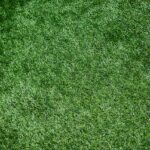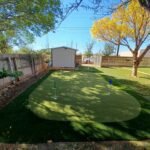From Paws to Playtime: Everything You Need to Know About Dogs and Artificial Turf
Introduction to Artificial Turf for Dogs
Artificial turf has become increasingly popular among dog owners as a safe and low-maintenance alternative to natural grass. It offers a variety of benefits, making it an excellent choice for creating a pet-friendly outdoor space. Whether you’re a new dog owner or considering upgrading your existing lawn, this article will guide you through everything you need to know about dogs and artificial turf.
Benefits of Using Artificial Turf for Dogs
Artificial turf provides numerous advantages for both dogs and their owners. Firstly, it is highly durable and resistant to wear and tear caused by playful paws. Unlike natural grass, artificial turf can withstand heavy traffic and won’t become muddy or patchy, ensuring a clean and comfortable surface for your furry friend to run and play on.
Additionally, artificial turf is non-allergenic, making it an excellent option for dogs with sensitive skin or allergies. It eliminates the risk of exposure to harmful pesticides, fertilizers, and other chemicals commonly used on natural grass, promoting a healthier and safer environment for your beloved pet.
Moreover, artificial turf requires minimal maintenance compared to natural grass. Say goodbye to mowing, watering, and weeding. With artificial turf, you can save both time and money on lawn care, allowing you to spend more quality time with your four-legged companion.
Considerations When Choosing Artificial Turf for Dogs
When selecting artificial turf for your dog’s play area, there are several factors to consider. First and foremost, ensure that the turf is specifically designed for pets. Look for turf that is durable, has good drainage capabilities, and is resistant to odors caused by pet waste.
Another crucial consideration is the pile height of the turf. Opt for a shorter pile height, around 1-1.5 inches, as longer blades may be more challenging to clean and can harbor bacteria. Choose turf with a higher stitch count, as this indicates better quality and durability.
Lastly, consider the climate in which you live. If you reside in a hot and sunny area, select turf with built-in UV protection to prevent fading and overheating. If you live in a rainy region, choose turf with efficient drainage to avoid waterlogging.
How We Install Artificial Turf for Dogs
Installing artificial turf for dogs is a relatively straightforward process that can be done by following a few simple steps. Here’s a step-by-step guide for how we’ll get started:
- Prepare the area: At Golf Greens, we’ll clear the designated area of grass, weeds, or debris. Level the ground to ensure a smooth surface for the turf installation.
- Add a weed barrier: We’ll lay down a weed barrier fabric to prevent any unwanted vegetation from growing through the turf. This will help maintain a clean and tidy appearance.
- Install a base layer: At Golf Greens Texas, we’ll apply a layer of crushed stone or decomposed granite to create a stable foundation for the turf. Compact the base layer using a plate compactor to ensure proper stability.
- Lay the turf: We’ll roll out the artificial turf and allow it to acclimate to the environment for a few hours. Trim any excess turf to fit the designated area, ensuring a neat and precise installation. Secure the edges of the turf using landscape spikes or adhesive.
- Apply infill: At Golf Greens, we’ll spread an infill material, such as silica sand or rubber granules, evenly across the turf using a spreader. This will provide stability and cushioning for your dog’s paws while also aiding in drainage.
- Brush the turf: We’ll use a power brush or a stiff broom to brush against the grain of the turf, ensuring the infill is properly distributed and the blades are standing upright.
Remember to follow the manufacturer’s instructions for specific installation guidelines and consult with professionals if needed.
Maintenance Tips for Artificial Turf and Dogs
While artificial turf requires less maintenance than natural grass, it still requires some upkeep to ensure its longevity and keep it looking its best. Here are some essential maintenance tips for artificial turf and dogs:
- Regularly remove pet waste: Promptly remove any pet waste from the turf to prevent odors and maintain a clean environment. Use a pooper scooper or plastic bag to dispose of the waste properly.
- Clean and disinfect: Periodically clean the turf with a mild detergent and water solution to remove any dirt or bacteria. Avoid using harsh chemicals that could be harmful to your pet. Additionally, consider using a pet-friendly disinfectant to keep the turf sanitized.
- Brush the turf: Regularly brush the turf to prevent matting and keep the blades standing upright. This will help maintain a natural appearance and ensure optimal performance.
- Address stains and odors: In case of any stubborn stains or odors, use a pet-friendly stain remover or odor neutralizer specifically designed for artificial turf. Follow the manufacturer’s instructions for best results.
By following these maintenance tips, you can keep your artificial turf clean, odor-free, and in excellent condition for years.
Common Misconceptions About Artificial Turf and Dogs
Despite the numerous benefits of artificial turf for dogs, there are some common misconceptions that need to be addressed. Let’s debunk a few of these myths:
Myth 1: Artificial turf is too hot for dogs. While it’s true that artificial turf can become warm under direct sunlight, it doesn’t retain heat like pavement or concrete. Most modern artificial turf is designed with heat-resistant materials and features that help dissipate heat, making it comfortable for your furry friend.
Myth 2: Artificial turf is not suitable for large dogs. Artificial turf is suitable for dogs of all sizes. Just make sure to choose a durable, high-quality turf with a higher stitch count. This will ensure that it can withstand the activities of large dogs without getting damaged.
Myth 3: Artificial turf is difficult to clean. On the contrary, artificial turf is relatively easy to clean. Regular removal of pet waste and periodic cleaning with mild detergent and water is usually sufficient to maintain its cleanliness. Additionally, the infill material helps with drainage and prevents odors.
Comparing Artificial Turf to Natural Grass for Dogs
When it comes to choosing between artificial turf and natural grass for your dog’s play area, it’s essential to consider the pros and cons of each option. Let’s compare them:
Artificial turf:
- Requires minimal maintenance
- Durable and resistant to wear and tear
- Non-allergenic and safe for dogs
- Provides a clean and comfortable surface
- Odor-resistant and easy to clean
- Can withstand heavy traffic and play
Natural grass:
- Requires regular maintenance (mowing, watering, weeding)
- Prone to becoming muddy and patchy
- May contain harmful chemicals (pesticides, fertilizers)
- Can cause allergies and skin irritations in dogs
- Requires constant upkeep to maintain a healthy appearance
Considering these factors, it’s evident that artificial turf offers more advantages and convenience for both dogs and their owners. It provides a safe and enjoyable outdoor space for your furry friend without the hassle and maintenance required by natural grass.
Frequently Asked Questions About Artificial Turf for Dogs
- Is artificial turf safe for dogs? Yes, artificial turf is safe for dogs. It is non-toxic, non-allergenic, and resistant to the chemicals commonly found in natural grass.
- Will artificial turf cause skin irritations in dogs? Artificial turf is designed to be pet-friendly and does not typically cause skin irritations. However, choosing high-quality turf with appropriate infill materials is essential to ensure optimal comfort for your dog.
- Can dogs dig through artificial turf? While it’s rare, some dogs may tend to dig. To prevent this, consider placing a barrier beneath the turf during installation or addressing any underlying behavioral issues with proper training.
- How long does artificial turf last? With proper maintenance and care, artificial turf can last anywhere from 10 to 20 years, depending on the quality of the turf and the amount of traffic it receives.
- Can artificial turf be installed indoors for dogs? Yes, artificial turf can be installed indoors as well. It provides a comfortable and safe surface for dogs to play and eliminates the need for frequent indoor clean-ups.
Making the Right Choice for Your Furry Friend
Artificial turf offers a plethora of benefits for dogs and their owners. From its durability and low-maintenance nature to its pet-friendly and safe characteristics, it’s no wonder that more and more dog owners are opting for artificial turf. By considering your furry friend’s specific needs and the advantages artificial turf provides, you can create a perfect outdoor space where your dog can play, run, and enjoy without any worries.
So why wait? Make the right choice for your furry friend and invest in artificial turf today. Say goodbye to muddy paws and endless lawn maintenance, and say hello to endless playtime and a beautiful, pet-friendly yard. Your dog will thank you for it!
Ready to transform your dog’s play area? Contact us, at Golf Greens Texas, today to learn more about our high-quality artificial turf options and create the perfect space for your furry friend to enjoy!







